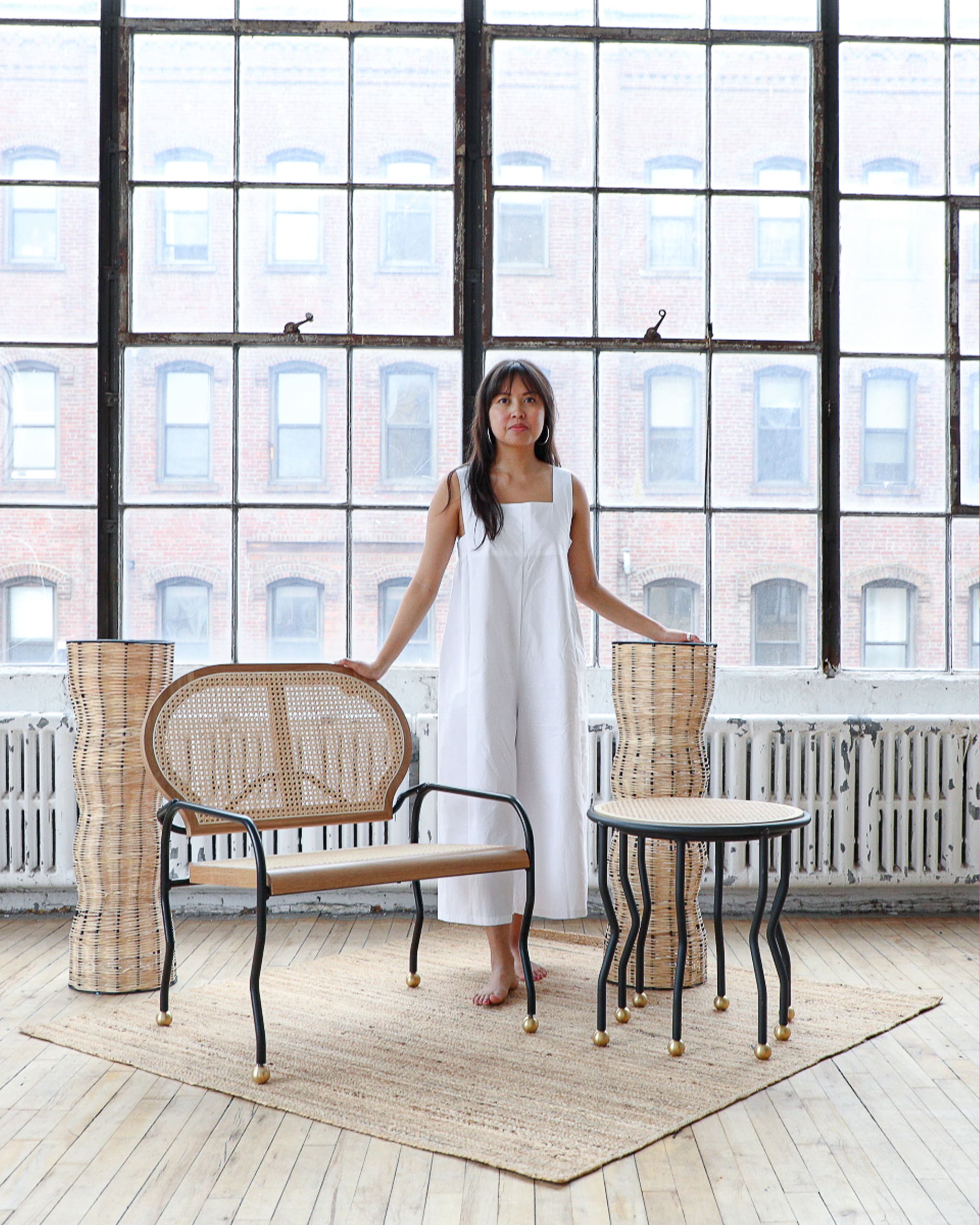Cheyenne Concepcion
Cheyenne Concepcion is decolonizing public art through visual story telling.
Vogue Philippines invited 10 artists to showcase what “celebration” means to them through their chosen medium. For designer and installation artist Cheyenne Concepcion, her art works carve out a space to celebrate our history and heritage.
Cheyenne Concepcion was once told by a mentor, “what you’re doing is trying to decolonize public art.” At that time, all the designer and installation artist felt like she had done was speak out about historical truths long ignored by America. That statement has a profound impact on her. “The fact that the simple act of speaking up can be considered decolonization is meaningful in itself,” she says.
The New York-based creative originally pursued design as a practical concession to her mothers worries about her wanting to enter the arts. She went on to take Landscape Architecture for her graduate studies at Berkeley. It was during this time where she began turning every design project into an immersive art installation. Her professors took note of her natural inclination to arts and encouraged her to apply for a prestigious national art fellowship, which she went on to be awarded.
As a first-generation Filipino-American, Concepcion’s work now largely centers on trying to reconcile the injustices faced by her Filipino predecessors. “I’ve always wondered why some aspects of our culture have more fortitude than other aspects.”
The artists describes her practice as part social commentary, part group therapy. “I often follow an idea into its physical form, which allows me to work in a multidisciplinary way,” she says, describing her artistic identity. “I was never formally trained, so my practice looks and feels like a laboratory of trial and error.”
Her work begins with a lot of research, and her “secret sauce”; conceptual rigor. She follows an idea, which typically centers around themes surrounding urban and societal issues.
“Art helps ideas travel faster,” she explains. “Because my work is in dialogue with socio-cultural issues, I find art [to be] a useful tool for communicating ideas, creating awareness, and gathering community. I like to think of my work as a social-sculpture, anchored by physical objects and installations but deeply collaborative by design.”
Her recent work has taken form in larger, more public art installations, which allow audiences to become active producers of the work. According to Concepcion, this helps foster community collaboration and engagement, providing a sense of co-ownership with her viewers, all while giving them a platform to contribute their own voices to the narrative.
To the artist, this is the future of public art. “We are moving away from heroic figures on pedestals; public art in the future should reflect the communities they are surrounded by.”
Concepcion tells us about one of her project’s she feels the most pride for; her RECLAIM collection. “I designed a furniture collection inspired by the buried history of the iconic peacock chair, essentially re-inventing the peacock chair itself.”
She says that the idea behind the collection came upon reflecting how her time in design school provided her with barely any insight into her Southeast Asian background. “When I accidentally discovered this history of the peacock chair I quite literally felt the world stop. This was one of the most famous chairs in all of history, so why had I never heard about its origins in the Philippines?”
In keeping with the ethos of her RECLAIM collection, Concepcion mounted her recent installation “Disappearing St. Malo” in Socrates Sculpture Park. The artist reimagined the Bahay Kubo with woven mylar roofing. The glistening artwork is an ode to the historic fishing village along the shore of Louisiana, known as the first permanent settlement of Filipinos, and potentially the first Asian-American settlement in the United States.
“Our culture and craft is beautiful, important and should be celebrated and regarded within the artworld as so.” says Concepcion.

“For me, celebration is an action, a verb. With this work, I sculpted a physical space from which to celebrate Filipinos’ contribution to America’s cultural fabric by honoring stories from our past, our present, and our future.” —Cheyenne Concepcion
